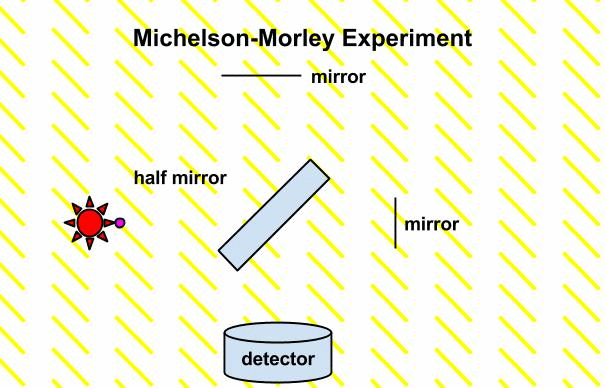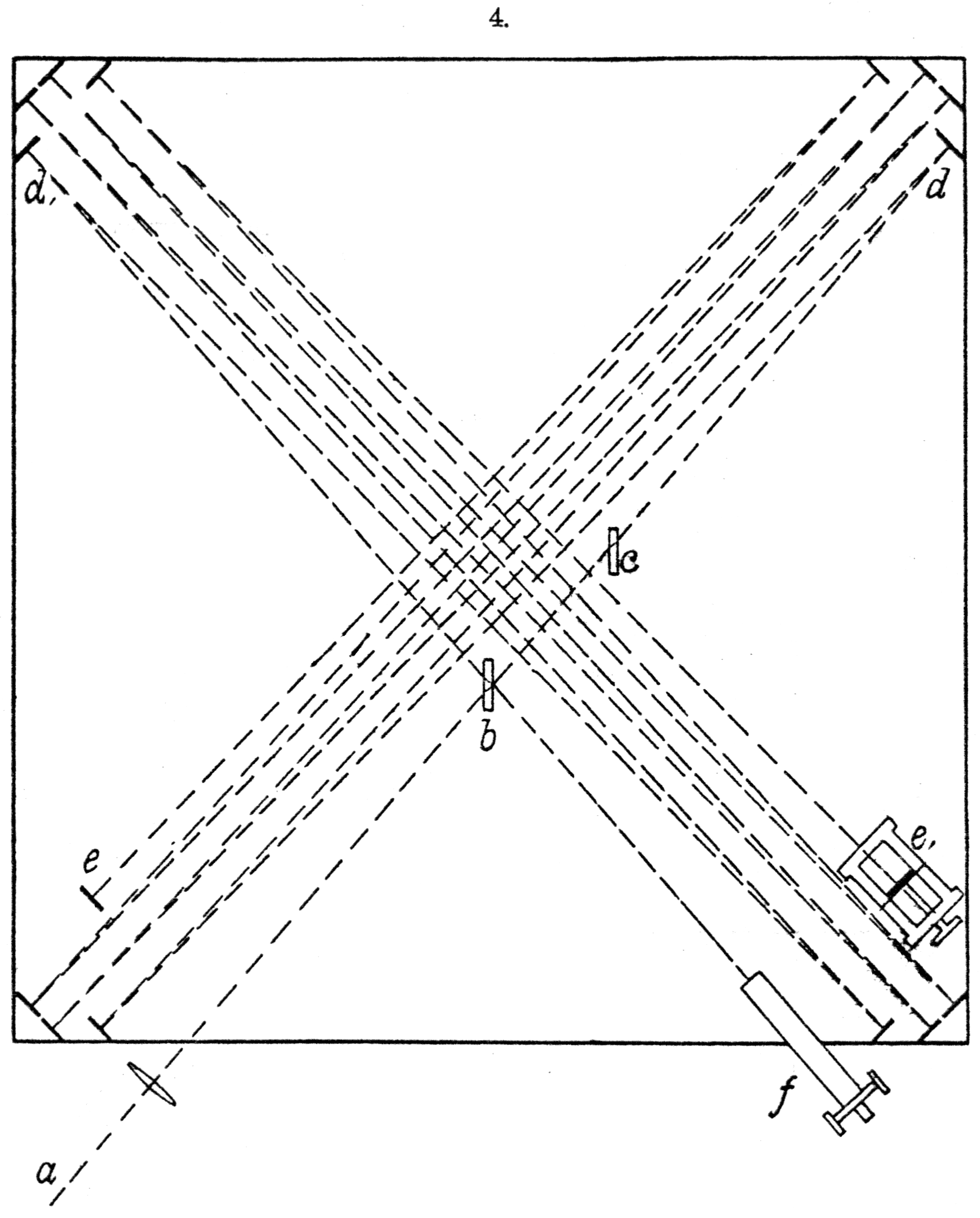The Michelson-Morley
Experiment

Albert
Michelson and Edward Morley tried to measure the
speed of light in different directions using light interferometers.
An interferometer is an apparatus that splits
light at right angles, using a half mirror, and
then measures the interference of the beam of
light with itself. Using this apparatus they
thought they could measure the difference in the
speed of light in each direction and thus
measure the relative motion of the Earth and the
aether.
An
interferometer works by splitting a beam
of light into two perpendicular beams, and
then combining them back together. By
looking at the interference pattern of the
combined beam you can calculate the
different speed of each half beam. With
this, they could, theoretically, measure
the difference in speed of each path and
thus measure the relative velocity of the
Earth and the aether.
This idea can be seen in the following
animation:
|

When the aether is stationary relative to the
experiment there is no interference and the
two waves (blue and green) combine back into
one (pink). When the aether is moving relative
to the experiment the two waves are out of
phase and create an interference pattern (the
green reaches the detector before the blue).
|

A
sketch of the Michelson-Morley
interferometer. The light bounces off
multiple mirrors making it more
sensitive. From their 1887 paper: On
the Relative Motion of the Earth and
the Luminiferous Ether. |
In
order to make the apparatus more precise
and sensitive they used multiple mirrors
to make the light path longer.
They also took different measurements when
the Earth was at different places in its
orbit. They published their findings in
the 1887 paper named On the Relative
Motion of the Earth and the Luminiferous
Ether in the American Journal of
Science. In this paper they reported
an insignificant result, and bounded the
relative speed of the Earth and the aether
to be less than 1/6 of Earth's orbital
speed.
This result puzzled many physicists, as a
relative speed of less than the Earth's
orbital speed, at any time during its
orbit, meant that the aether moves with
the Earth. This result was unexplainable.
|
This
experiment, and others like it ,put aether
theory into a problematic place. Though some
physicists, most notably Hendrik Lorentz, tried
to explain this result, it is clear that the
lack of empirical data signaled the beginning of
the end of the luminiferous
aether.
|